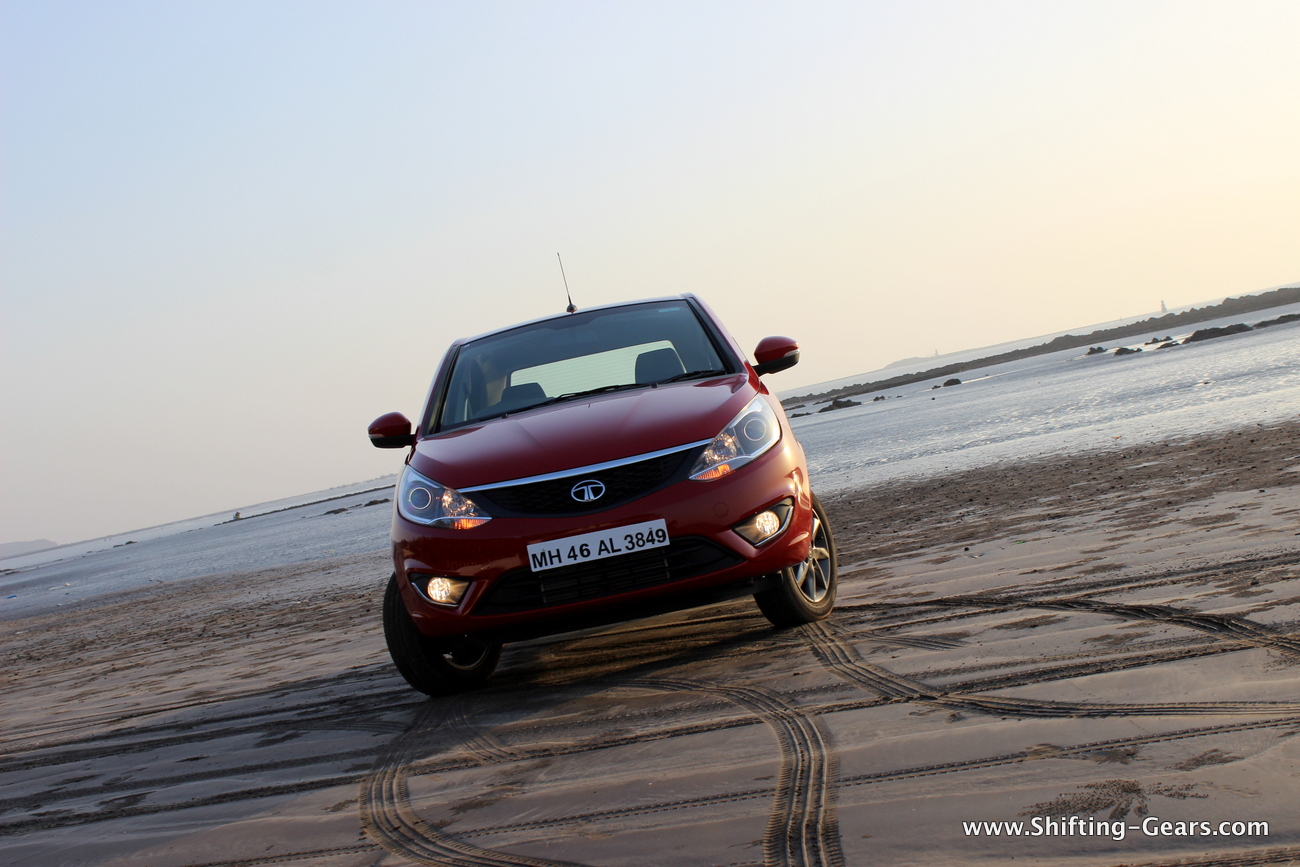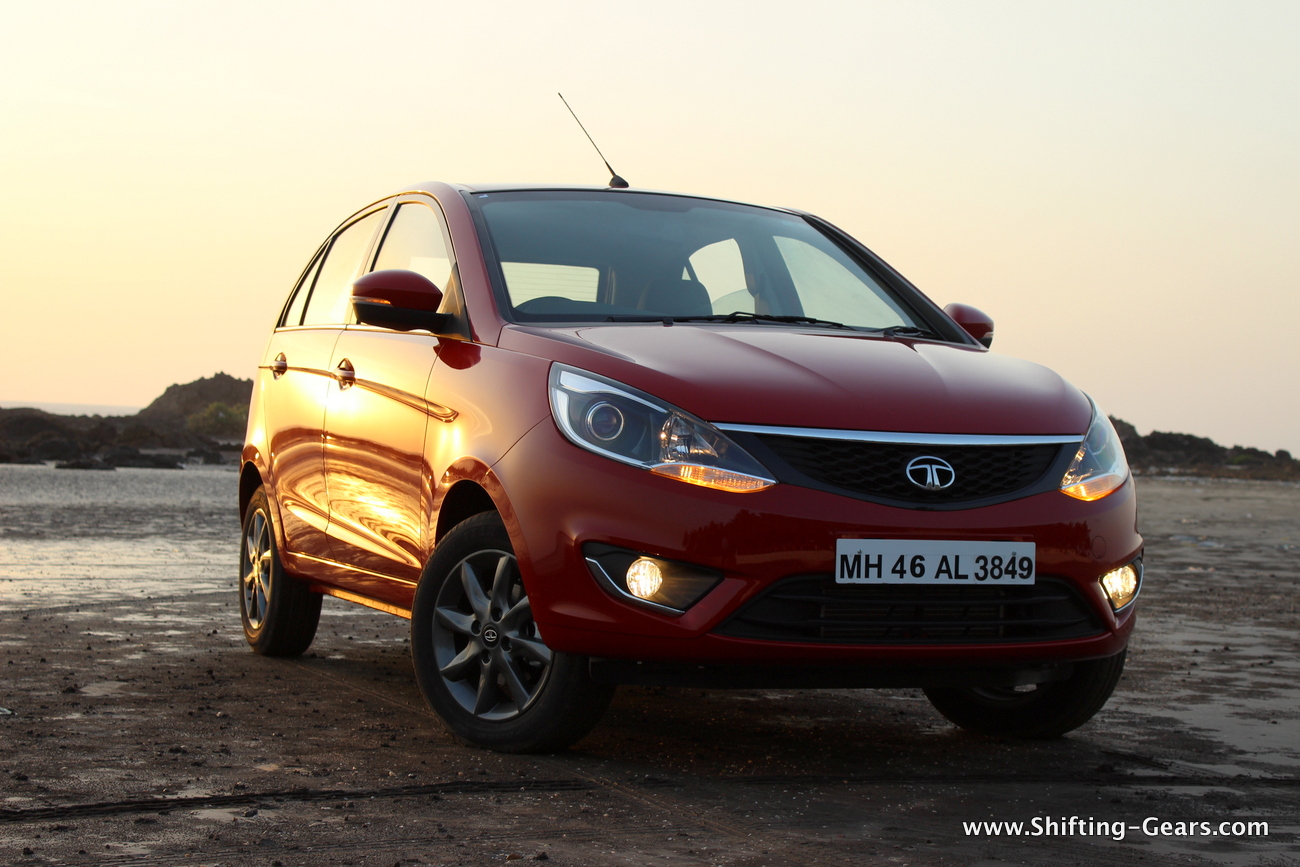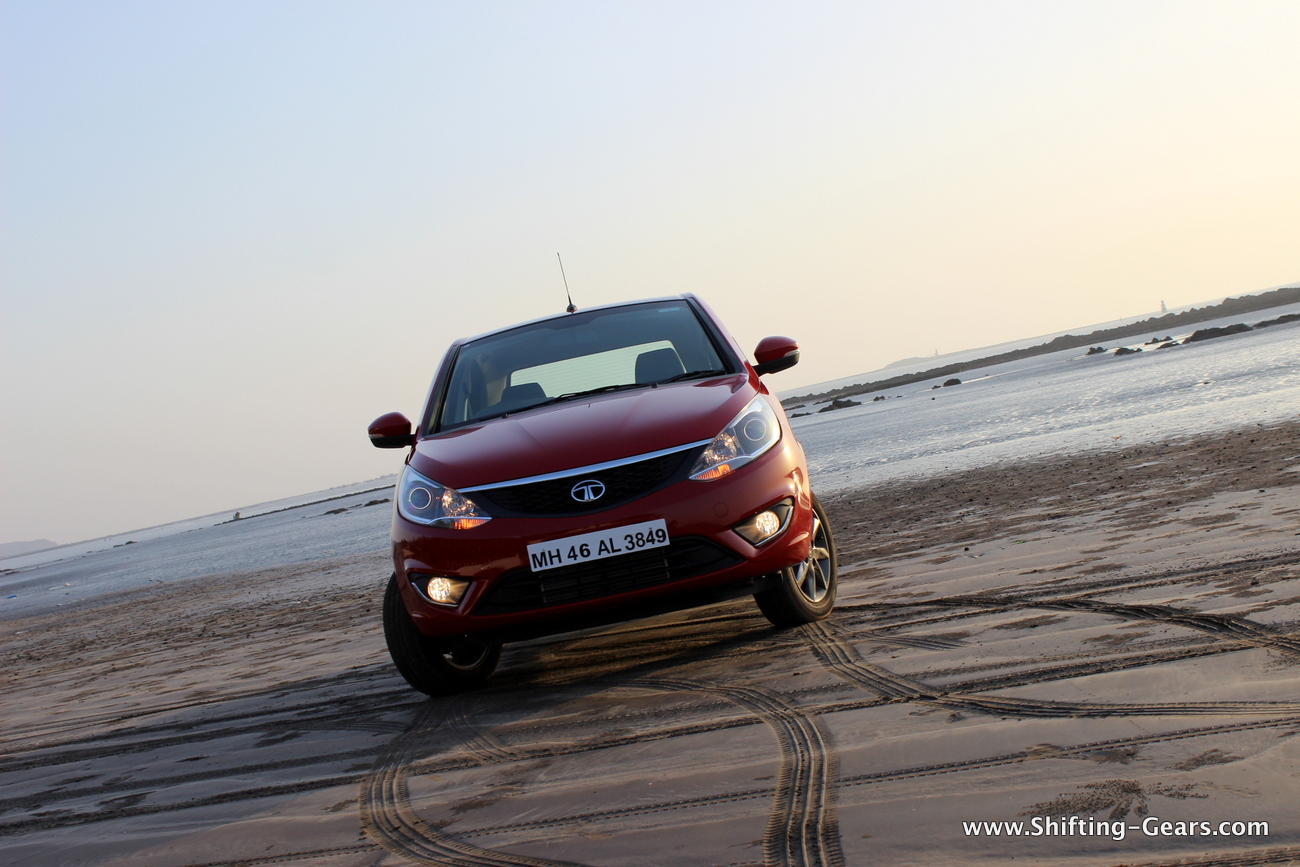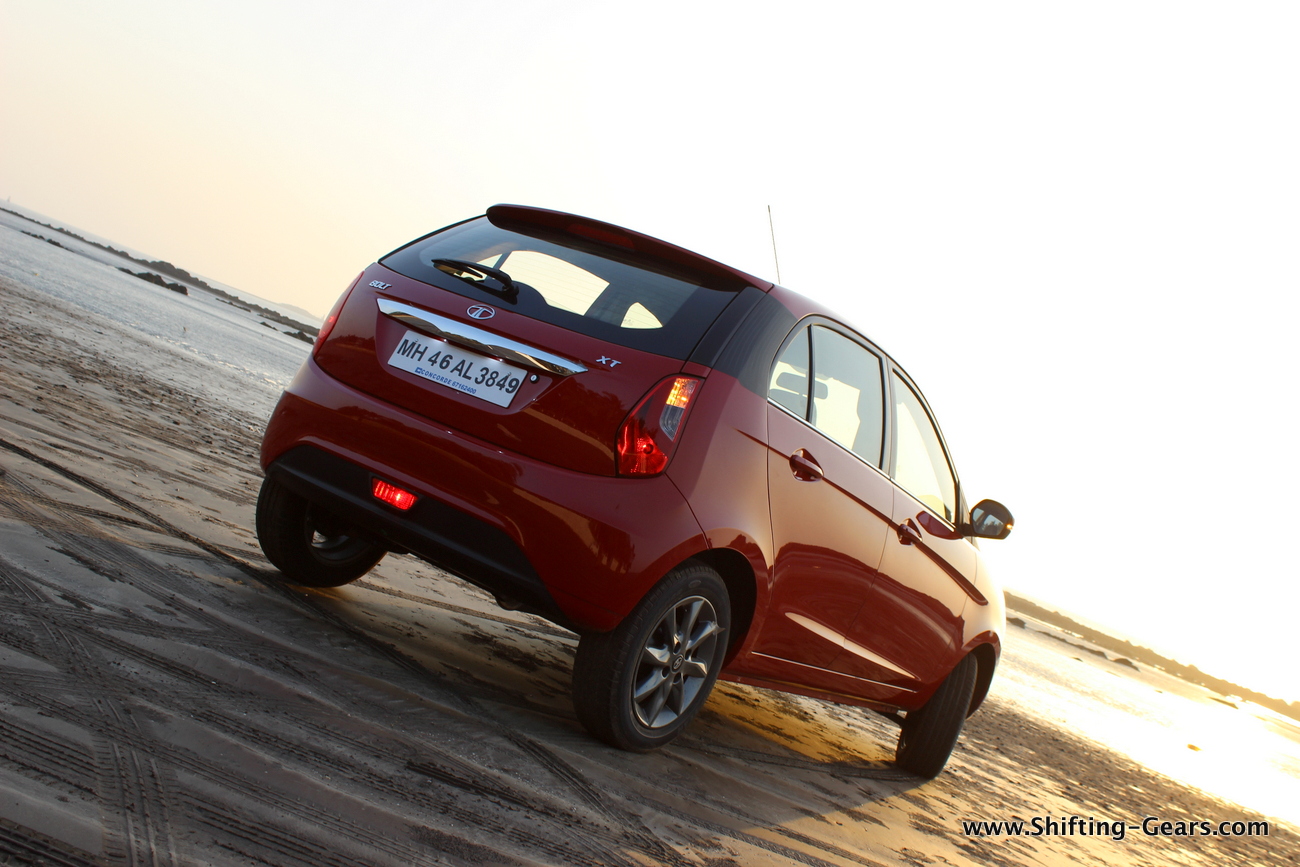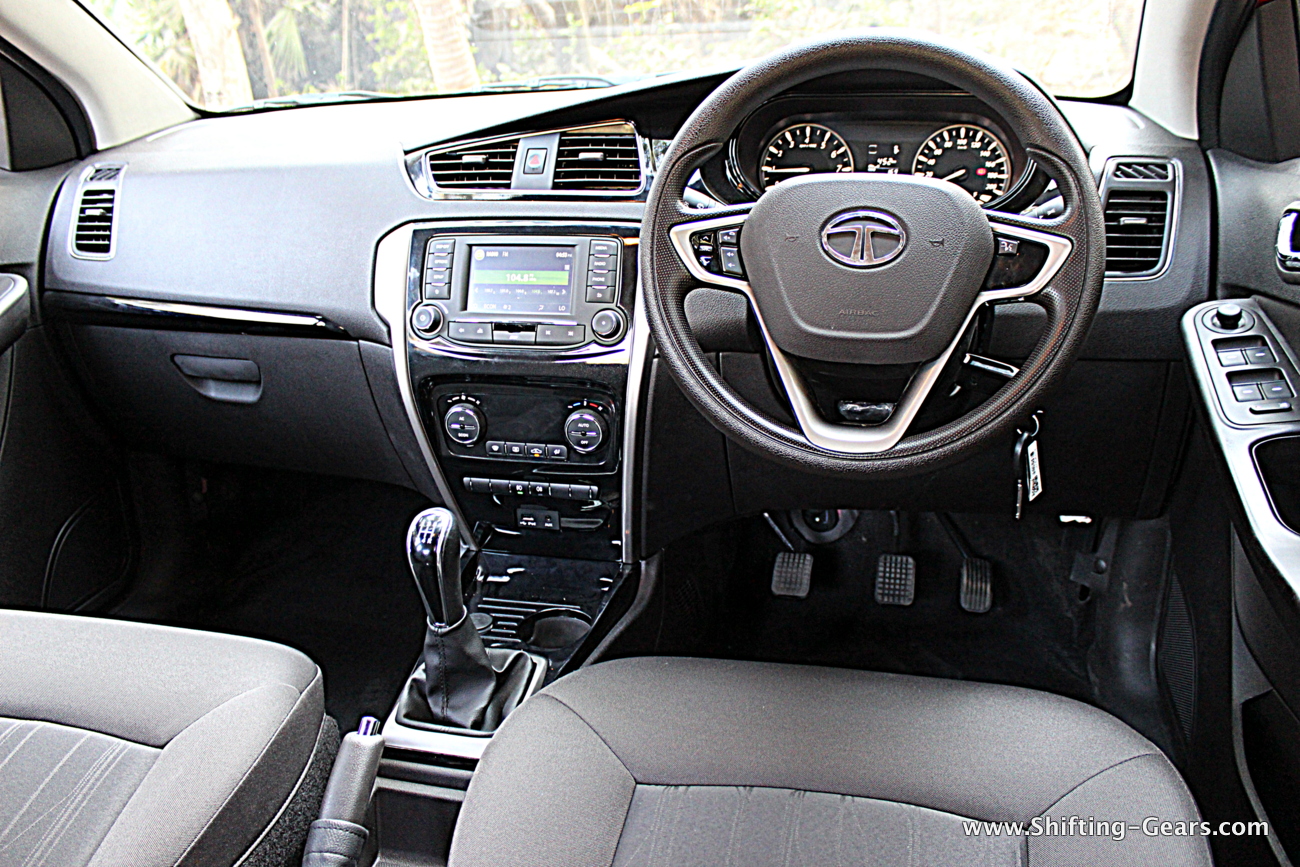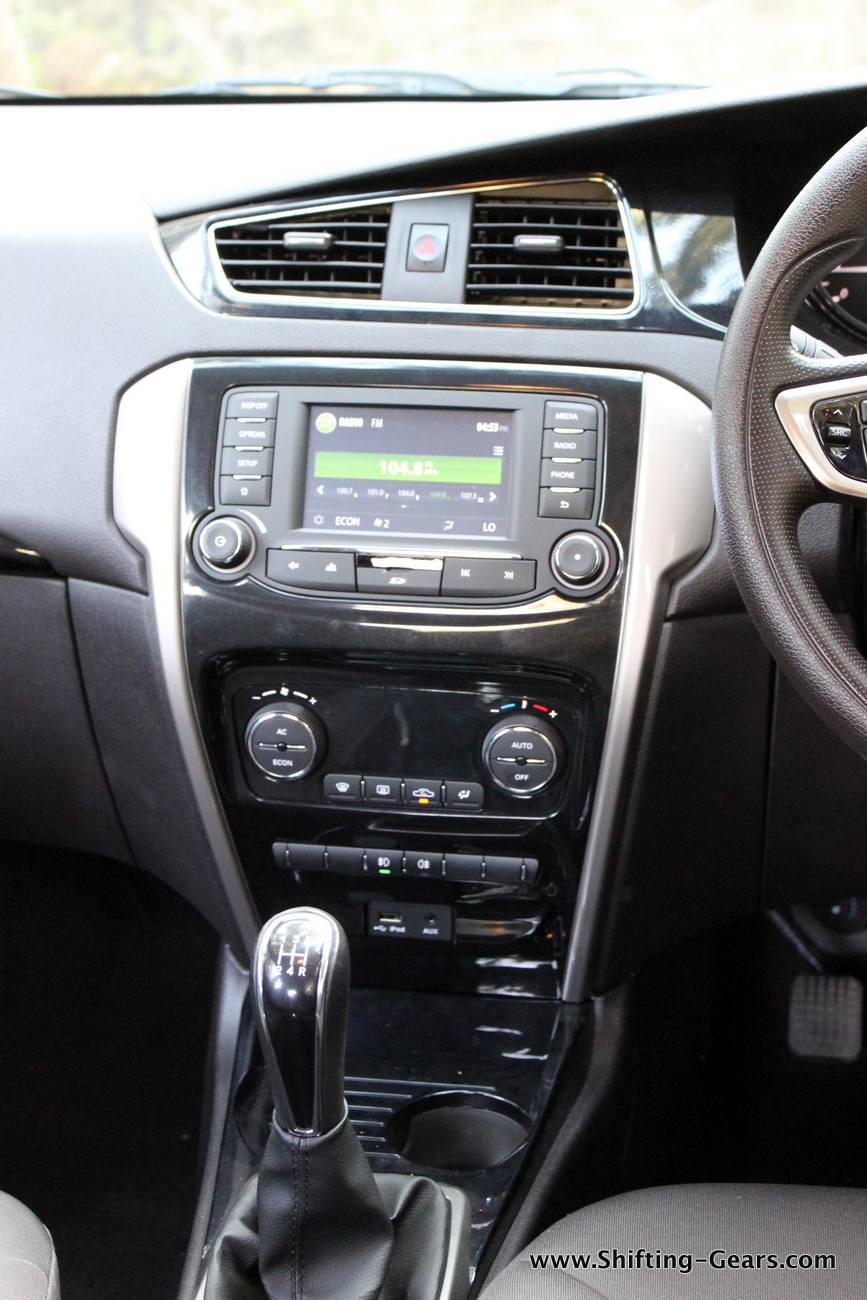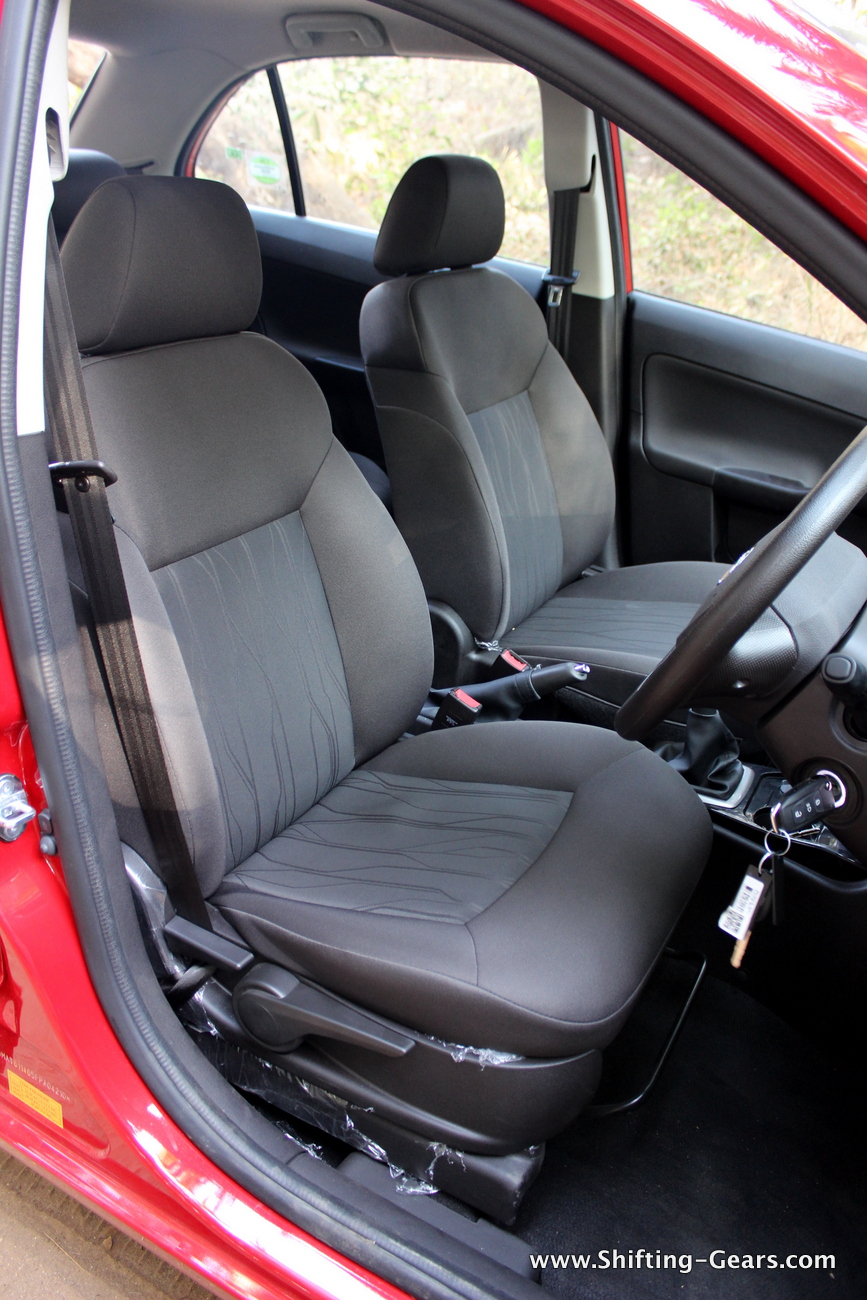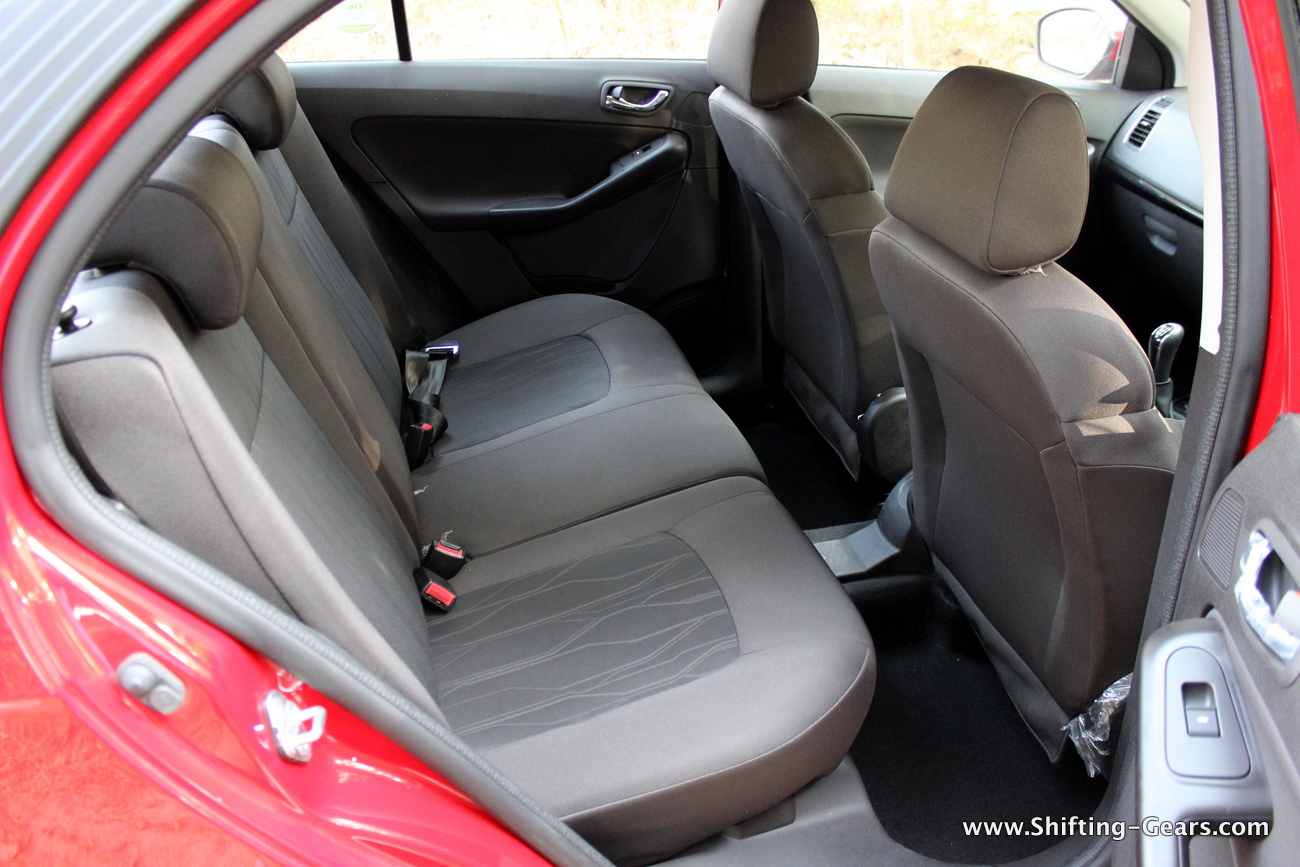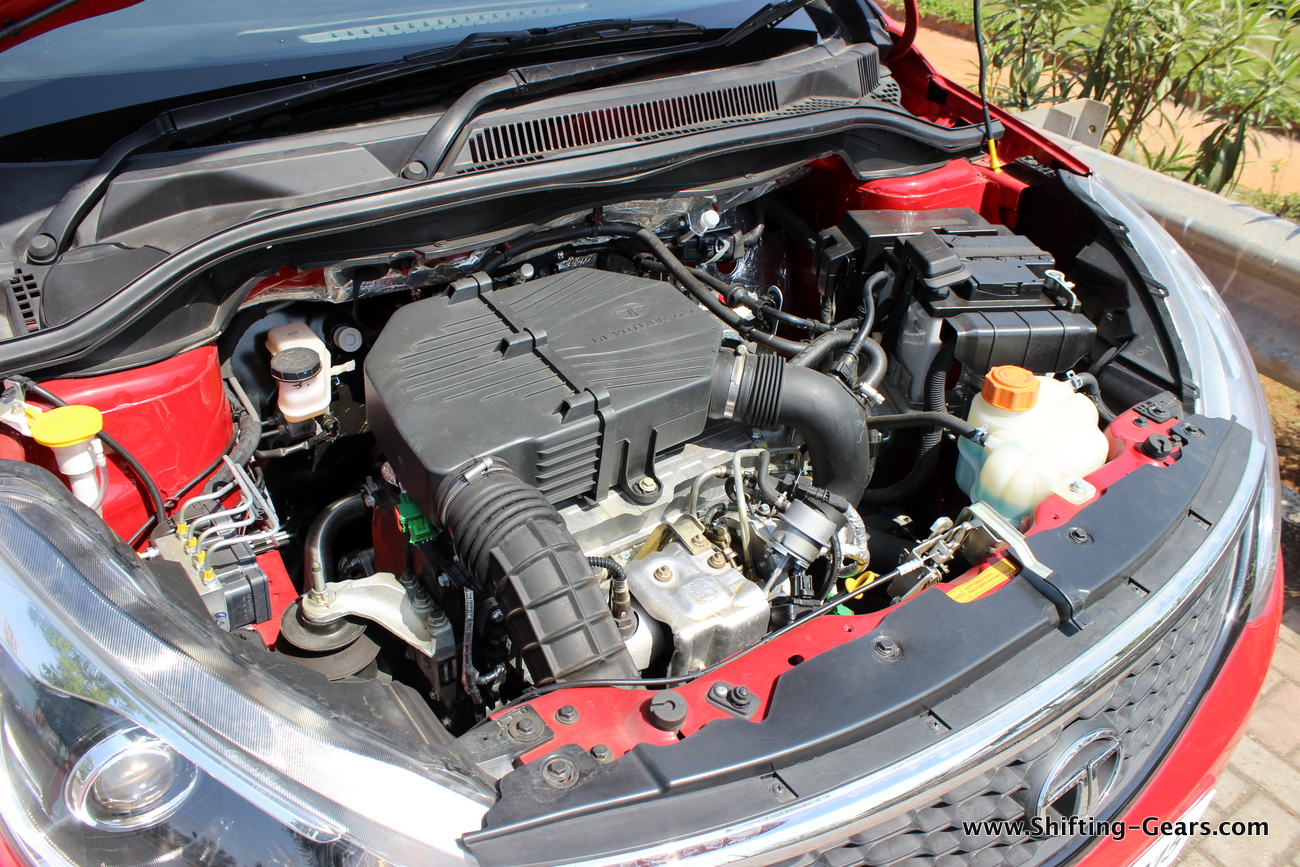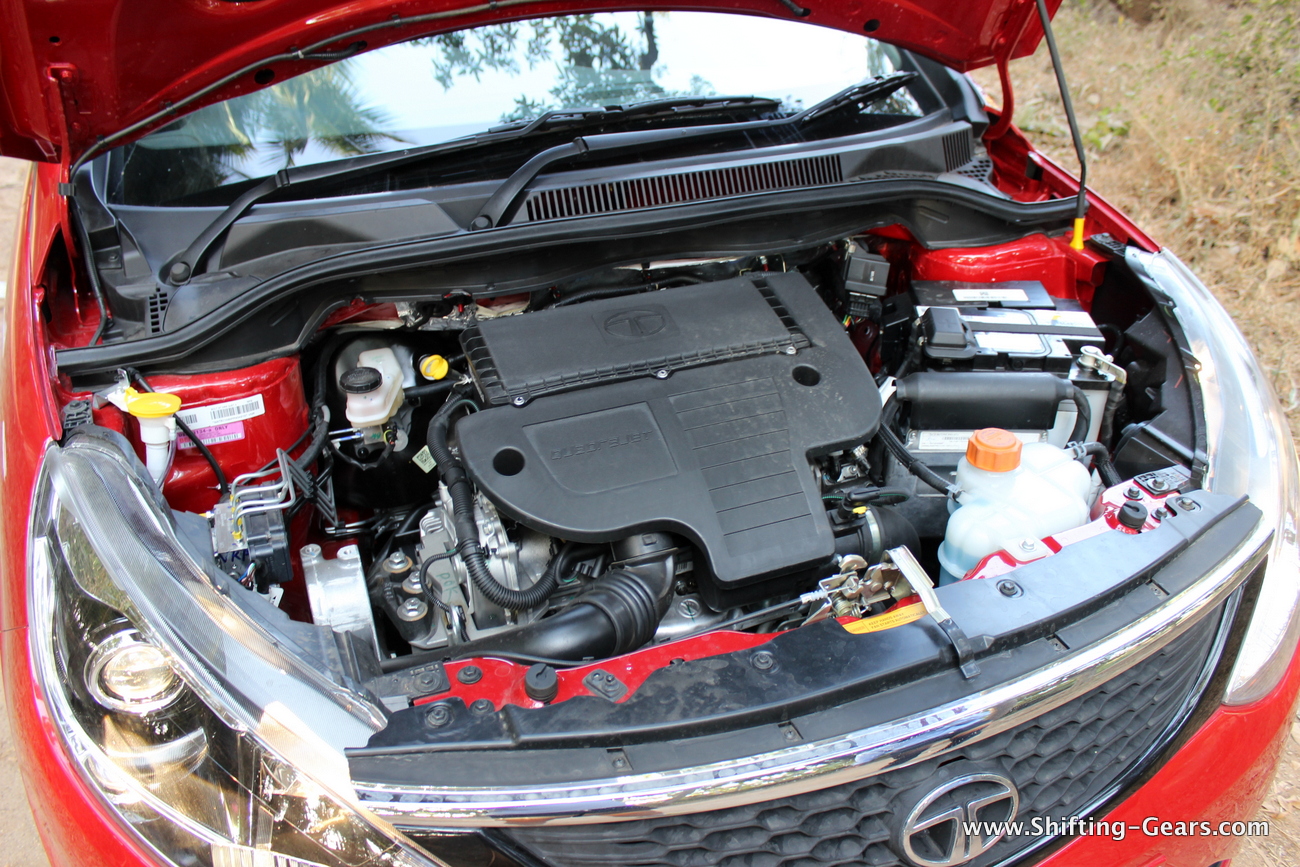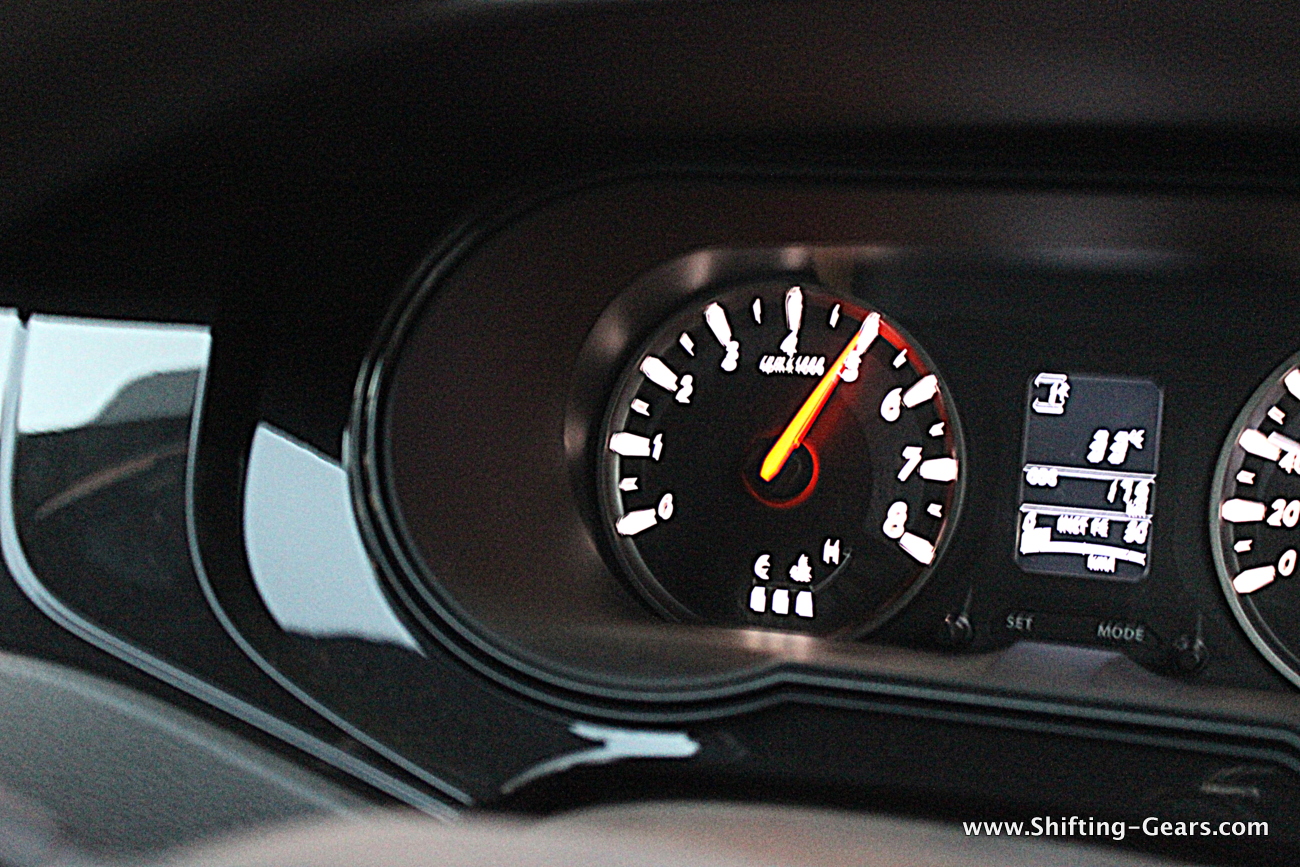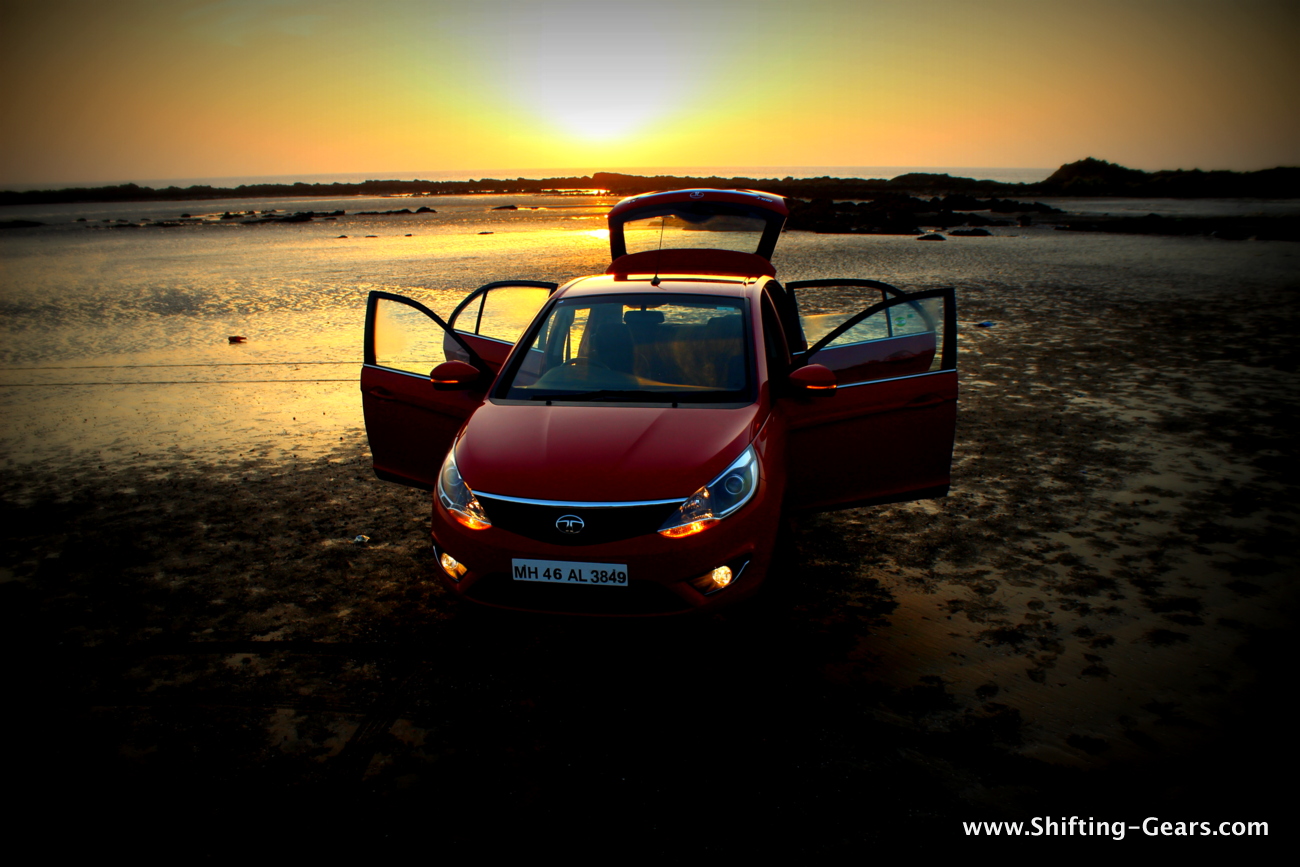The Tata Bolt has been launched in India at a price ranging between Rs. 4.45 – 7.00 lakh (ex-showroom Delhi).
Tata Motors has been struggling for a long time in the Indian car scene, and it is quite evident. Sales have been low & slow for months and there was nothing out of the box attracting customers to the dealerships. Last year, Tata Motors launched the Zest compact sedan in India with a segment first diesel + AMT combination. But the brand focused on promoting the 1.2L turbocharged Revotron petrol motor more and did not exploit the full potential of the diesel automatic offering. The Zest had quite a few segment first & segment best features, but that hasn’t really helped too much on the sales front. For the past two months, sales of the Zest have been going down and are now at 2,121 units as of February 2015. There is not a single Tata product in the list of top 20 cars sold in India. Tata Motors then launched the Bolt in January 2015, in a bid to push the passenger car sales. Honestly, if there is anything going against the new generation Tata cars, it is the design. The cars still look like the dated Indica & Indigo, which were not really superstars in their days. The Zest & Bolt have been built on the Vista / Manza platform and are not really all-new products. What will be all-new in terms of design, is the upcoming Kite hatchback & sedan.
Fuel efficient and spacious, still unwanted. That was the case with the Indica & Vista in the Indian market in the recent past. The Bolt hence is a very important car for Tata Motors so that they get back in the numbers game. Yes, the car looks like the same old Indica, but to be fair, it has changed quite a bit, inside-out. Tata has tried its best to raise the bar in terms of quality and equipment and the Bolt is the second product after the Zest under the brands Horizonext strategy. Tata claims to have spent 3,00,000 hours on the Bolt’s R&D. But the problem was not always the products. Poor after sales service and dated looking showrooms failed to wow customers. Recently though, Tata has revamped its dealer network to please and attract new audience. The brand now makes use of digital integration and has 3,000 tablet-equipped sales staff in the sales & service department. Tata even claims that 1,000 additional sales personnel have been appointed to specially handle customers & queries for the new Bolt. With such a strong push from the manufacturer, is the Tata Bolt really good enough to fight the competition? We took the Bolt petrol & diesel out for a cumulative 500+ km spin to find out.
Exteriors:
One glance at the Tata Bolt and there is no denying that it is a glamorous evolution of the Vista (Indica), and nothing else. Same roundish body shell, almost similar proportions, and well, an old design. But then, body panels are completely different. Although she shape and appearance resembles the Vista, Tata has worked on each and every part of the Bolt. The Bolt measures 3,825mm in length, which is 30mm longer than the Vista. The hatchback measures 1,695mm in width, 1,562mm in height and has a wheelbase of 2,470mm. As is the case with all Tata cars, the Bolt has a healthy ground clearance of 165mm. The Bolt is also the heaviest hatchback in the segment with the petrol weighing 1,095 kg and 1,132 kg for the diesel.
If you’ve observed the Zest carefully, the Bolt is quite similar from the front end. The Bolt gets smoked out projector headlamps in a twin-pot layout. Chrome ornaments within the headlamp look fantastic and add a nice contrast. Below, the fog lamp & the chrome accent around the fog lamp is identical to the Zest. Front grille again is identical to the Zest and gets a honeycomb mesh design. On the Bolt, Tata offers a chrome strip only on top of the grille, and not below. Front air dam is trapezoidal in shape and uses black plastic here. The bonnet sports a subtle power bulge in the centre while is highlighted well on the red shade we were testing. Windshield washer nozzles are placed neatly over a black plastic section at the upper edge of the bonnet. A long radio antenna is placed on the roof, above the front windscreen.
Come to the side, and the Bolt sports two prominent crease lines. One rising from above the front wheel all the way till the rear tail lamp; and one on the lower end, on both the doors, sweeping upwards at the back. The Bolt features 8-spoke alloy wheels. There is no petrol or diesel badge on the hatchback, the only way to differentiate is the alloy wheels; which sport a dark grey shade on the diesel, while the petrol model is seen in silver. The Bolt gets blackened B-pillars and a chrome weather strip on the window sill. Rear view mirror is identical to the Zest and gets LED turn indicators. There is no turn indicator on the front fender, at least on the top model. Tata offers almost all the creature comforts on the Bolt by segment standards, but have missed on one premium one – true keyless entry. You still have to use the remote to unlock as there is no request sensor on the door handles. Looking at the silhouette of the Bolt, one might easily mistake it for a Vista.
The welcome changes on the Bolt are seen at the back. The best thing about the Bolt, no more Christmas Tree tail lamps. Tata Motors has mounted a new, more conventional tail lamp on the Bolt which although not very unique, is still better than the Vista / Indica. The rear structure however doesn’t seem to be completely redesigned. Above the tail lamp, there are two separate pieces stacked vertically between the windscreen & the C-pillar. The C-pillar has been blacked out but gets a very unnecessary kink around the crease line. Tailgate looks all-new, thanks to the new tail lamp design. A chunky chrome strip is placed above the number plate housing. The number plate illumination makes use of white LED bulbs. The Bolt badge sits on the left while the variant bade is placed on the right, on the tail gate. The Bolt also gets a roof mounted, rear spoiler which also hosts the HMSL (High Mount Stop Lamp). The bumper gets a blacked out trapezoidal section where you get a rear fog lamp. No mud flaps were provided on our test car, so we assume it might be an accessory.
As an overall package, the Bolt although nothing radical is still refreshing by Tata standards. The manufacturer is also working hard on promotional activities to increase footfall at their dealerships. Compared to competition though, the Bolt doesn’t really stand out as a handsome looking hatch. It is contemporary enough, but lacks the wow factor.
Interiors:
Get inside the Bolt, and the interiors which are similar to the Zest and are a big step up compared to previous Tata products. The hatchback gets all-black interiors, although the colour of the seats is a little dull, dark brownish. All-black interiors however add a little sporty touch and thanks to the enormous greenhouse, the cabin doesn’t feel too dark & claustrophobic at all.
The Bolt makes use of piano black, silver & chrome accents on the inside to make the cabin look premium. Instrument cluster is nicely recessed, hence even under harsh sun, there is minimum reflection and one can read it clearly. There is no redline in the tachometer, however, once you are close to it, the needle turns red. A very neat touch! MID sits between the speedo & tachometer and displays average fuel efficiency, real time fuel efficiency, DTE, gearshift indicator, clock, trip meter, odometer and outside temperature. MID also clearly mentions which door is left open, saving the driver from the effort to check all doors. Steering wheel is identical to the Zest and gets contours to rest your thumb and controls for the audio & telephone. Steering is made up of soft touch plastic and is the right size. Centre console is seen in gloss black with silver accents on either side. The instrument cluster also sees a gloss black panel running towards the centre AC vents and a gloss black strip above the glovebox as well.
Tata offers a flip / folding key with the Bolt which can be used to activate the follow me home lamps, apart from the usual lock / unlock function. The second spare key is a regular key though, so make sure you do not loose of break the keyfob.
The jointly developed stereo system by Tata and Harman sits on top of the centre console. The top spec variant gets an integrated 5″ touchscreen unit. Sound quality from the 4 speakers + 4 tweeters is acceptable by segment standards, and may be a notch above the Dzire. USB & Aux inputs are placed above the front cup holder, while an SD card can be inserted in the head unit itself. If you turn the ignition off, the ‘One Hour Mode’ allows the occupants to use the stereo for up to 60 minutes. Unique to the Bolt, the head unit also supports video playback & navigation via smartphone (this will be available in the Zest soon). One interesting feature on the top-spec touchscreen head unit is that you can use it to control the AC temperature, auto-locking doors, approach lamps etc. Screen sensitivity is however not up to the mark, and there is a slight lag. So don’t expect smartphone like performance here. Also, while driving around in the day, the screen is very reflective and it is difficult to read what’s displayed. Automatic climate control display on the head unit is nice and fancy, and should wow a few, but it is nowhere as convenient as a small screen between the dials. Looking at the head unit while changing settings can get a bit annoying at times. On the lower variants, you get manual AC controls, conventionally placed. AC works fine, even on a bright sunny day. It kept us cool at blower level two, easily. Below the AC controls you have buttons for the front and rear fog lamps. On the petrol variant, below the AC controls, there are a couple of buttons for the Sport & Eco modes. So much space all around in the Bolt, but only one bottle holder, ahead of the gear stalk. All four door pockets are good for magazines or toll tickets, but are flat and squeezing in a bottle is a task.
Fit and finish is acceptable by segment standards, but is nowhere close to the Hyundai i20 which is the segment benchmark. There are a couple of rough spots & bad cuts clearly visible. For example, behind the lever to pop the hood open, the floor carpet is cut inappropriately and is not hidden well either.
Seats are seen in dark brownish shade, or black if you may want to call it. They have textured finish on the centre and are of the soft compound. Lateral and lumbar support is in adequate quantity and the seat height adjustment available on the top model will keep shorter drivers happy. We really wish Tata would have provided a driver armrest to round-off the Bolt really well. There is no dead pedal provided either and neither is the floor inclined. It wouldn’t have been of any use though since there is no place to the left of the clutch to move your foot down. Inside rear view mirror is very small, should have been a size bigger. Also, rearward visibility is hampered due to the thick C-pillars.
Jump into the rear seats and things are typical of Tata cars – SPACIOUS. Accommodating three well built adults is an easy task for the Bolt. Seat width can actually put a few C2 segment sedans to shame. Recline angle of the rear seat is very comfortable. What’s lacking is the under thigh support. Not that it’s bad, but it isn’t satisfactory either. Legroom and headroom available is in ample quantity. Also, the greenhouse on the Bolt is on the higher side, making the cabin rather bright and airy. For the 5th occupant, things aren’t too bad either. The seatback is flat and hence one can sit upright, all the way back. The floor hump is also on the minimum side and won’t interfere much with ones feet. Storage space for the rear passengers is limited to the thin door pad magazine holders. No cup holder behind the handbrake, no centre armrest with cupholders and no front seatback pockets.
Looking at the Grand i10, Tata could have tried to offer a rear AC vent on the Bolt. But a very efficient HVAC is good enough to keep rear occupants happy on a sunny day.
Boot space in the Bolt is very poor. Only 210 litres is better than the Swift, but is lower than all other competitors in the segment. The good thing is, the seats have a 60:40 split which can help at times when you need extra carrying capacity. Those who are looking to store their valuables in the car, there is a hidden storage drawer under the front passenger seat.
Engine, performance & handling:
Powering the Bolt are the same set of engines which we have seen on the Zest. The turbocharged 1.2L Revotron T produces 89 BHP of power @ 5,000 RPM and 140 Nm of torque @ 1,400 – 4,000 RPM. Engine is matched to a 5-speed manual gearbox. Engine downsizing and turbocharging is the next big thing, and we expect competition to offer similar engines soon. Turbocharging has helped the Bolt deliver peak power & torque much earlier than competition. The Bolt petrol comes with 3 driving modes; which is a segment first. Out of Eco, Sports and City, the City mode is selected by default every time you fire up the engine. Switching between these modes changes the ECU maps depending upon your requirement, fuel economy or power.
Fire up the Revotron motor and the engine idling is not very audible. Driving around the Bolt petrol within the city is fairly easy. Although turbocharged, there is almost 0 lag and the car moves happily on lower RPMs. We even tried moving away in second gear from a standstill, and we could manage that with minimum clutch slipping, which is rare on a petrol motor. Availability of low end torque enhances city drivability and the car can crawl in city traffic without any throttle input. Clutch & steering are light to use as well making things enjoyable within the city.
On the highway, there is no comparing the 1.2 Revotron with the 1.2 TSi from Volkswagen. The Bolt petrol is good within the city with brilliant low end torque, but on the highway, the motor isn’t very revv happy. The engine even sounds a bit stressed beyond 4,000 RPM. If you want to enjoy the drive, the Bolt is comfortable around the 80 – 100 mph mark with the engine cruising without feeling stressed. It is not boring though, the car accelerates nicely and power is delivered in a linear manner. There is no turbo spool felt like in some diesels. At times if you’re driving in Eco mode, rather than a conventional downshift, you can shift to the sport mode which enhances throttle input.
Eco mode as the name suggests changes the ECU map for better efficiency. In this mode, even though you press the pedal hard, the engine builds revs slowly. Throttle response becomes a bit slow and the engine acts a bit lazy. This is surely the mode to be in when you’re simply cruising on a lazy afternoon. But on your favourite twisties, this could get rather boring.
On Sport mode, the throttle response becomes noticeably crisp. You can immediately tell the difference between the two maps. The engine is now eager to move forward with the lightest of input. If you like to play around or zoom away quickly from a signal, the Sport mode will work much better for you compared to the Eco mode.
The City mode is a mix of both, not as lazy as the Eco but neither as crisp as the Sport mode.
The Bolt 1.2L Revotron T petrol delivers an ARAI approved fuel efficiency figure of 17.57 kmpl.
The diesel Bolt is powered by the familiar Fiat-sourced 1.3L Quadrajet motor producing 74 BHP of power @ 4,000 RPM and 190 Nm of torque @ 1,750 – 3,000 RPM. Tata should have offered the 90 PS diesel engine as an option at least. Engine is matched to a 5-speed manual gearbox. Although Tata has the diesel + AMT combination ready, they have chosen not to introduce it with the Bolt. We think it is an opportunity which Tata should exploit since there is no other diesel automatic hatchback available in the segment.
Fire up the Bolt diesel and the engine is barely audible inside the cabin. NVH levels are well maintained. There is no vibration felt on the pedals either. On the negative side, while the gear is in 1st, 3rd or 5th gear, and if you place your hand on it, there is a noticeably amount of vibration felt. Diesel clatter is minimum while driving within the city. On high RPM though, as is the case with most other diesel engines, things get a bit audible.
The 1.3L diesel motor has been tried and tested in India for a long time, and driveability is nothing new. Slot in first and the Bolt crawls without any throttle input. Turbo lag is well maintained and the car produces peak torque 250 RPM earlier than the Swift. Availability of low end torque enhances city driving and you can move around traffic in 2nd gear without the need to downshift to first often. Power delivery is linear too, although a slight turbo spool is felt around 2,000 RPM, as is the case with many other Multijet powered cars. Thanks to the light clutch & steering, the diesel Bolt is also easy to live with in city limits.
On the highways, the Bolt is quick but power delivery tapers off once you cross 100 – 120 kmph. Revving the Bolt hard on higher RPM will result in a lot of engine noise rather than gaining speed. It is best to drive the Bolt in a sedate manner, and sticking to speed limits. In 5th gear, the needle hovers just below 2,000 RPM with the speedo on 80 kmph. Also, since the Bolt is the heaviest hatchback in the segment, it is not as quick off the line as its competitors. Power to weight ratios are the lowest in the segment. Compared to competiton, the Bolt diesel is nowhere close the performance of the Polo or i20, but is almost at par with the Liva and Punto.
The Bolt 1.3L diesel delivers an ARAI approved fuel efficiency figure of 22.95 kmpl.
Gearbox on both the engines is quite notchy. Gear gates are not really well defined and while driving enthusiastically, you might struggle at times to slot in the right gear. Also, there is a noticeable rubbery feel to it. Gear lever is slim and falls in your hand nicely.
Suspension setup on the Bolt is on the firmer side. Compare it to the Zest, and rear occupants would be more happy in the compact sedan. Ride quality over bumpy roads is acceptable, but it does allow some jerks to be felt inside the cabin. Good thing is that on uneven roads, there will be minimum vertical movement compared to the Zest, but on bad road conditions, things will be less than ideal. On high speed though, the car doesn’t feel very planted when compared to the Punto or the Polo. Suspension thuds are well muted, but the feeling you get inside about how things are mounted isn’t very impressive. Will it last the distance? We are not sure.
Steering is light, and easy to use. Developed by ZF, it has an ‘Active Return’ function which enhances steering feedback. It weighs up adequately when on high speeds and doesn’t feel vague like the Hyundai’s. Cornering in the Bolt at low speeds in fine; but you will notice understeer kicking in on high speeds. Tyres provide decent grip, but the dynamics of the Bolt are not the corner carver types.
Braking duty is performed by disc brakes at the front and drum brakes at the rear. The hatch also gets the 9th generation ABS sourced from Bosch. Stopping power is adequate and under panic braking, the car stops in a straight line. The Goodyear tyres offered good grip, without locking or squealing. Even when the ABS kicks-in, it is very mild and won’t scare newbie drivers.
If you’re looking for a spacious, feature rich hatchback, the Tata Bolt has almost all the bells & whistles to wow you, at least on paper. The hatchback although looks like an Indica, has seen a lot of improvement in all aspects and fit & finish all around is much better. At the given price, there is no hatchback which can commute 5 with ease. If not for the classes, the Bolt can surely please the masses.

